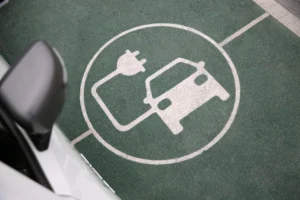10 Clever Grocery Tips to Beat Increasing Food Costs
Visiting the grocery store nowadays can be quite challenging, yet there are several key strategies to assist you in saving a few bucks with each trip.
Mastering Food Inflation: Smart Strategies
In 2025, food inflation poses a significant challenge for American households, with prices soaring more than 20% in recent years.
Grocery shopping has turned into a tactical endeavor—but with a little planning and some tech, you can make smarter choices.

You can absolutely keep your pantry full without overspending. Here are 10 practical tips to help you save on groceries—even with rising prices.
1. Utilize Grocery Apps and Digital Coupons
Before you head out, your first move should be to check your phone. For some time now, leading grocery chains in the U.S. have been offering apps filled with exclusive coupons, weekly specials, and cashback options.
Key Features:
- Kroger App—Earn points and access personalized deals.
- Target Circle—Get automatic cashback and promotions based on categories.
- Ibotta and Fetch—Get cash back for specific items through reward apps.
2. Choose Cheaper Alternatives for Expensive Items
Modify your recipes to reflect current market prices, especially for pricey items like fresh berries or beef.
This doesn’t mean compromising on quality—it’s about finding cost-effective substitutes. With some creativity, you can keep both flavor and nutrition intact while saving money.
3. Resist Impulse Purchases
Shopping when you’re hungry is a surefire way to overspend. Always bring a list—whether digital or on paper—and stick to it.
Steer clear of unnecessary aisles and always check the price per unit on shelf tags—bigger packages aren’t always the best deal.
4. Embrace Store Brands
For a long time, store brands faced ridicule—but in 2025, it’s time to shift that outdated perspective.
Big retailers like Kroger, Walmart, and Costco have heavily invested in their store brands, delivering excellent value.
Products such as milk, rice, pasta, cleaning supplies, and toiletries can be up to 30% less expensive—with quality matching or even surpassing national brands.
5. Shop on Key Days
Did you know that your shopping day influences your spending? In the U.S., many retailers introduce new deals on Wednesdays, making it a prime time to snag both ending and new promotions.
Try to steer clear of shopping on Sundays, as stores are packed, fresh items are scarce, and the temptation for impulse purchases is high.
6. Meal Planning Before Shopping
A common pitfall is shopping without a strategy, aimlessly picking items off the shelves.
Develop a weekly meal plan and craft your shopping list based on it. Using similar ingredients across multiple meals can help minimize waste and maximize your purchases.
7. Think About Bulk Buying Monthly
If you can manage space and organization, buying in bulk can lead to substantial savings. Costco, Sam’s Club, and BJ’s provide significantly lower prices when purchasing larger quantities.
If you live solo or with a few others, consider joining forces with friends or family to share costs and items.
8. Explore Local Farmers’ Markets
Besides supporting local farmers, markets can offer surprisingly affordable prices—especially late in the day or on Sundays, when sellers are eager to sell off their stock.
You can score fantastic deals on fresh produce, eggs, cheese, and more—often with superior quality.
9. Utilize Smart Cashback Credit Cards
Credit cards offering grocery rewards can alleviate financial strain—provided they are used wisely.
Here are some top choices:
- Blue Cash Preferred® by American Express—up to 6% cashback at grocery stores
- Citi Custom Cash®—5% cashback on your top spending category each billing cycle
10. Minimize Waste—Reuse Everything
The typical American household discards over $1,500 each year on food. Proper food storage, freezing extras, and creatively using leftovers can make a difference.
Create broths from peels and stems, repurpose cooked vegetables in soups, and pay attention to what you store in your fridge.
Final Thoughts: Smart Shopping is Crucial
The secret is in knowledge, planning, and effective use of available resources—from your shopping list to your rewards credit card.
Keep in mind: every dollar saved brings you closer to financial stability—and a well-stocked pantry.





